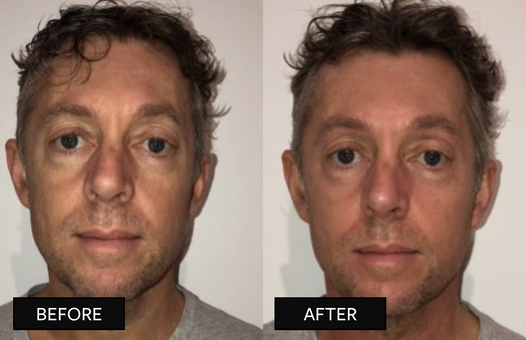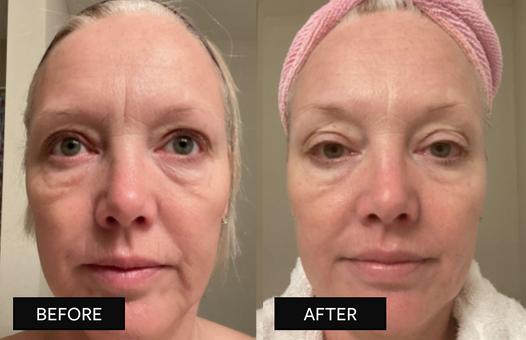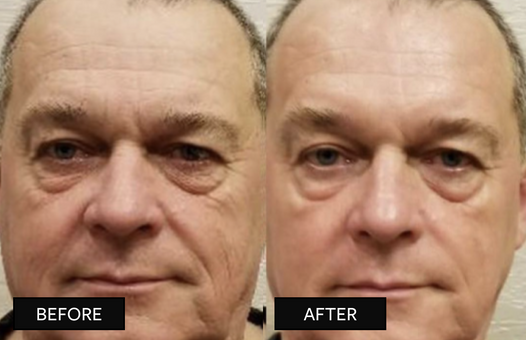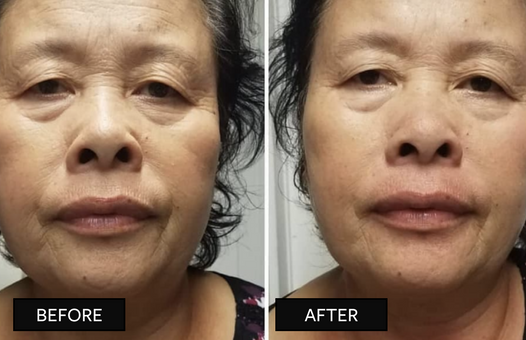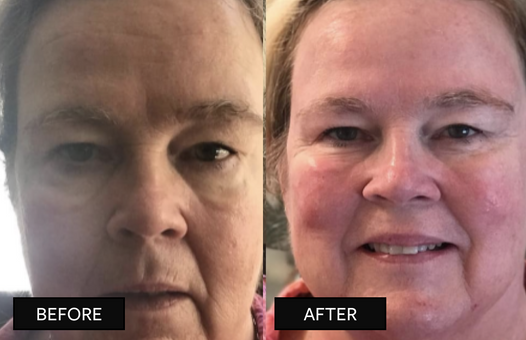South Korean Scientists Solve the "Peptide Paradox" That Left Millions Disappointed
First Moisturizer to Deliver High-Concentration, Stable Peptides Deep Enough to Matter - Without Irritation
By Dr. Ji-Yeon Kim
Published on: Aug 24, 2025
9 min read

"Nothing Works Anymore"
Margaret stood in my consultation room, clutching her mirror with trembling hands.
At 52, she was successful in her career, confident in her life - yet crushed by disappointment in her skin.
She had endured six months of prescription tretinoin that left her raw and peeling.
She had tried multiple chemical peels, each promising to "reset" her complexion, none delivering lasting change.
She even invested in a $3,000 series of lasers - with barely a dent in her deep forehead lines.
Her voice cracked:
"Dr. Kim… I feel like I'm fighting a losing battle. Nothing works anymore."
What I told her next didn't just change her skin. It reshaped my entire approach to dermatology.

The Old Way: Fighting on the Surface
For nearly two decades, I treated aging the way every dermatologist is trained:
- Attack the surface with acids and retinoids.
- Force turnover through controlled damage.
- Hope the skin repairs itself "better" than before.
But South Korean researchers recently revealed that we've been focusing on the wrong layer entirely.
The Discovery: The "Collagen Reservoir" Beneath the Surface

Using advanced confocal microscopy in Seoul, scientists uncovered something revolutionary:
Beneath 300 micrometers, skin contains a population of fibroblasts that maintain the same collagen-producing capacity as 25-year-old skin.
These fibroblasts aren't damaged by age. They don't shut down. They're just hidden deeper than most products ever reach.
The reason women spend thousands on skincare with little return becomes obvious when you look at the numbers:
- Standard serums penetrate 25-50μm.
- Peptides - the supposed miracle ingredient - stall at ~35μm.
- Even prescription tretinoin tops out around 150μm.
But your viable fibroblasts? They sit twice as deep.
This is why creams can feel luxurious and still fail: they stimulate the graveyard of senescent cells that no longer have the capacity to make collagen.
"Aging alters papillary fibroblasts, but not reticular fibroblasts," concluded the Korean study. "The collagen-producing reservoir remains intact - but unreachable."
For the first time, the problem wasn't a lack of good ingredients. It was barriers to reaching the right cells.
The Peptide Paradox

Peptides should be the gold standard of modern skincare.
In clinical labs, they send strong biochemical signals to fibroblasts:
"Make new collagen. Rebuild elastin. Restore structure."
But in skincare products, they collapse under two fatal flaws:
- Instability → Peptides are fragile. Heat, oxygen, and shipping degrade them. By the time most creams reach your shelf, their peptides are dead.
- Penetration limits → Even if peptides survive, they don't travel deep enough. They stop in the senescent layer - trying to "wake up" cells that lost their function decades ago.
This is why expensive "peptide creams" so often disappoint. They die in the jar or stall on the surface.
The South Korean Breakthrough

Hanacure's research team in Seoul refused to accept that peptides were "too unstable" or "too big" to work in real-world skincare.
The result: the proprietary Nano Emulsion manufacturing technique.
Here's what makes it different:
- Stability solved: Peptides are encapsulated in ultra-fine nano-droplets, preserving their structure and activity for months instead of days.
- Absorption solved: These nano-droplets mimic your skin's natural lipid layers, merging seamlessly and delivering peptides beyond 300μm - into the living collagen factories.
- Concentration maximized: Instead of the <3% found in department-store creams, Hanacure's moisturizer contains peptides at a super high concentration - clinically meaningful doses that actually trigger fibroblast activity.
For the first time, peptides don't die in the jar. They don't stall at the surface. They reach where collagen is still alive.
The Moment That Changed Everything

Three years ago, my own 71-year-old mother suffered a severe kitchen burn. Watching her recovery changed how I think about aging skin forever.
Doctors used peptide-based wound treatments to speed her healing. Normally these are stored frozen at -80°C and prepared fresh - costing thousands.
Within weeks, her skin wasn't just healing - it was regenerating with the vigor of someone decades younger.
I realized: if fibroblasts can regenerate in a 71-year-old burn patient, why not in everyday aging skin?
The answer was clear. In medicine, peptides work miracles because they're delivered directly to the cells that need them. In cosmetics, they fail because they're unstable and can't penetrate.
Hanacure solved both flaws.
Clinical Results That Rival Retinol - Without the Pain

In independent testing of Hanacure's Nano Emulsion Moisturizer:
- Wrinkle depth decreased 18.6% in 14 days - outperforming retinol's 9.2%.
- Skin barrier function improved 25.1%, helping skin stay hydrated and resilient.
- Elasticity improved in 93% of participants.
- Zero irritation was reported - compared to the redness and peeling retinoid users endured.
Patients didn't just look smoother. Their skin density, bounce, and radiance returned - changes only possible when fibroblasts at 300μm are activated.
Transformation in Real Life

When Margaret returned after just two weeks on Hanacure's Nano Emulsion Moisturizer, her transformation stunned us both.
Her crow's feet softened. Her forehead lines noticeably diminished.
But most striking? Her overall skin quality shifted: firm, plump, dense - like someone 15 years younger.
"How is this even possible?" she asked. "I've used stronger prescriptions with barely any change."
The answer was simple:
Retinoids force surface cells to peel - cells that are already senescent.
Hanacure's peptides reach the living fibroblasts deeper down - cells that never stopped working, only waiting.
That's the difference between irritating dead tissue and activating living cells.
Why Scarcity Is Built-In

Unlike mass-market creams, each batch of Nano Emulsion Moisturizer takes two weeks of precision manufacturing in South Korea.
Every nano-droplet must be the right size. Every peptide must remain intact. One deviation ruins the entire batch.
That's why dermatologists report waiting lists. And why the moisturizer sells out within days of release.
The Guarantee

Hanacure backs its Nano Emulsion Moisturizer with a "Bottom of the Jar" guarantee.
Use it completely. If you don't see visible transformation, they'll refund your money in full.
The Final Choice

You can keep stimulating senescent cells - the "graveyard" above 300μm that will never produce collagen again.
Or you can finally activate the fibroblasts your skin has been hiding all along.
Hanacure Nano Emulsion Moisturizer
The science that makes peptides finally work.




